Serengeti Wildebeest Migration Safari
We have Prepared Information about Serengeti Wildebeest Migration Safari, Every year, 1.5 million wildebeest, 200 000 zebra, and hundreds of antelope of various types undertake the 800 to 1000 km journey across Tanzania’s Serengeti and Kenya’s Masai Mara. All of the major predators, as one would assume, follow closely behind. It’s their take on ‘Food on the Move.’
There are no words to describe the feeling of witnessing these massive herds of wild animals roar across the plains, blowing up dust as they go, as they roar across the plains. They are truly one of the greatest spectacles on earth. If you watch them moving, it appears to be almost as if thunder is rumbling underneath the African soil as they are moving. And that’s before we get to the crocodile-infested river crossings in June/Jul/August.
What is Serengeti Wildebeest Migrations
Wildebeest, zebras, and gazelles migrate across the plains of East Africa each year in search of water and fresh grazing. Herds migrate from Tanzania to Kenya in July and August, where they spend the rest of the year. Furthermore, migrations replenish grasslands and maintain predator populations in the Serengeti ecosystem.
Why do they Migrate?
There is no other mammal migration larger than the 800-kilometer trek of the immense wildebeest herd. It occurs during the wet season, when grasses on the short-grass plains begin to green up and become more nutritious. Predators can easily be spotted in these areas, thus making them ideal places for calving. In the western corridor, the plains dry, forcing the wildebeest to move to greener pastures. The grasses in the northern extension of the ecosystem are the least nutritious, but they receive the highest rainfall. Wildebeest retreat here during the dry season, at least until the south becomes green again. As a result, the movement moves clockwise from south to west to north.

More About Serengeti Wildebeest Migration
November and December: Around the beginning of November, the short rains start. The wildebeest then start to move onto the Serengeti’s short-grass plains in late November and early December. These are near Ndutu, to the south and east of Seronera.
January, February , March: The majority of wildebeest calves are born in February, and the animals remain in the same region. There are said to be 8000 babies born per day for roughly three weeks.
The animals begin their long trip north in April or May in search of new grazing land and fresh water.
June: In the Western Corridor, the animals gather on the Grumeti River’s south side. Instead of being one continuous river, the river here often consists of a number of ponds and streams. These river crossings are not as as impressive as those of the Mara River in the north, but the animals serve as an annual feast for the enormous crocodiles of the Grumeti River.
July, August: The migration keeps migrating north, frequently splitting across a large area. Some pass through the Grumeti Reserve and Ikorongo, while others travel through the Serengeti National Park’s central region.
September: The migration’s biggest challenge is the Mara River, which is why the herds spread over the northern Serengeti. This river flows from Kenya’s neighboring Maasai Mara Game Reserve into the northern Serengeti. If you are fortunate enough to see a crossing, it is amazing.
October: The herds are moving south once more, across western Loliondo and the Lobo region of the Serengeti National Park, in search of the new leaves that appear after rains on the southern Serengeti’s short-grass plains.
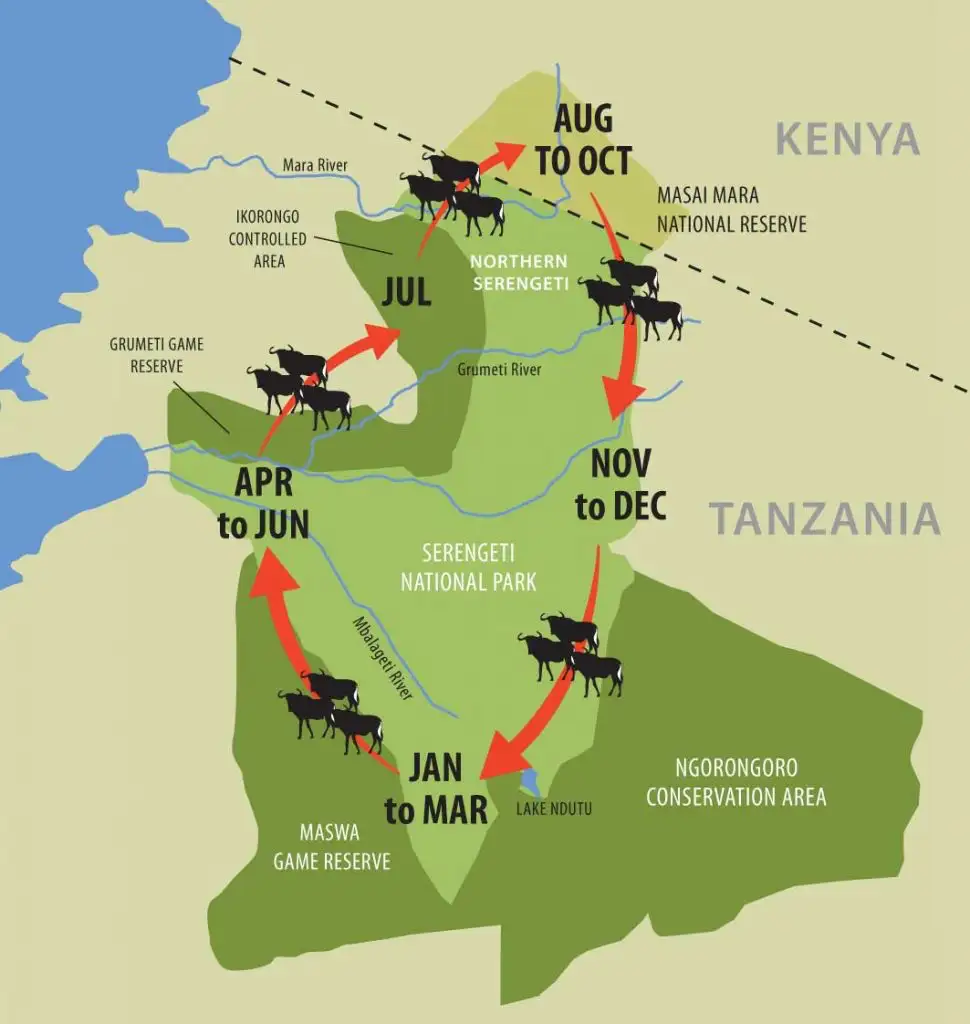
Due to the wildebeest's moving nature, specific accommodations will become "Mobile Camps" in order to facilitate the sighting. In contrast to dismantling the tent at the end of your stay, this tent will remain in place for several months, and then will be moved to a location where migration is likely to occur. In some areas, there are permanent camps and lodges, but they will be closed during non-migratory months.
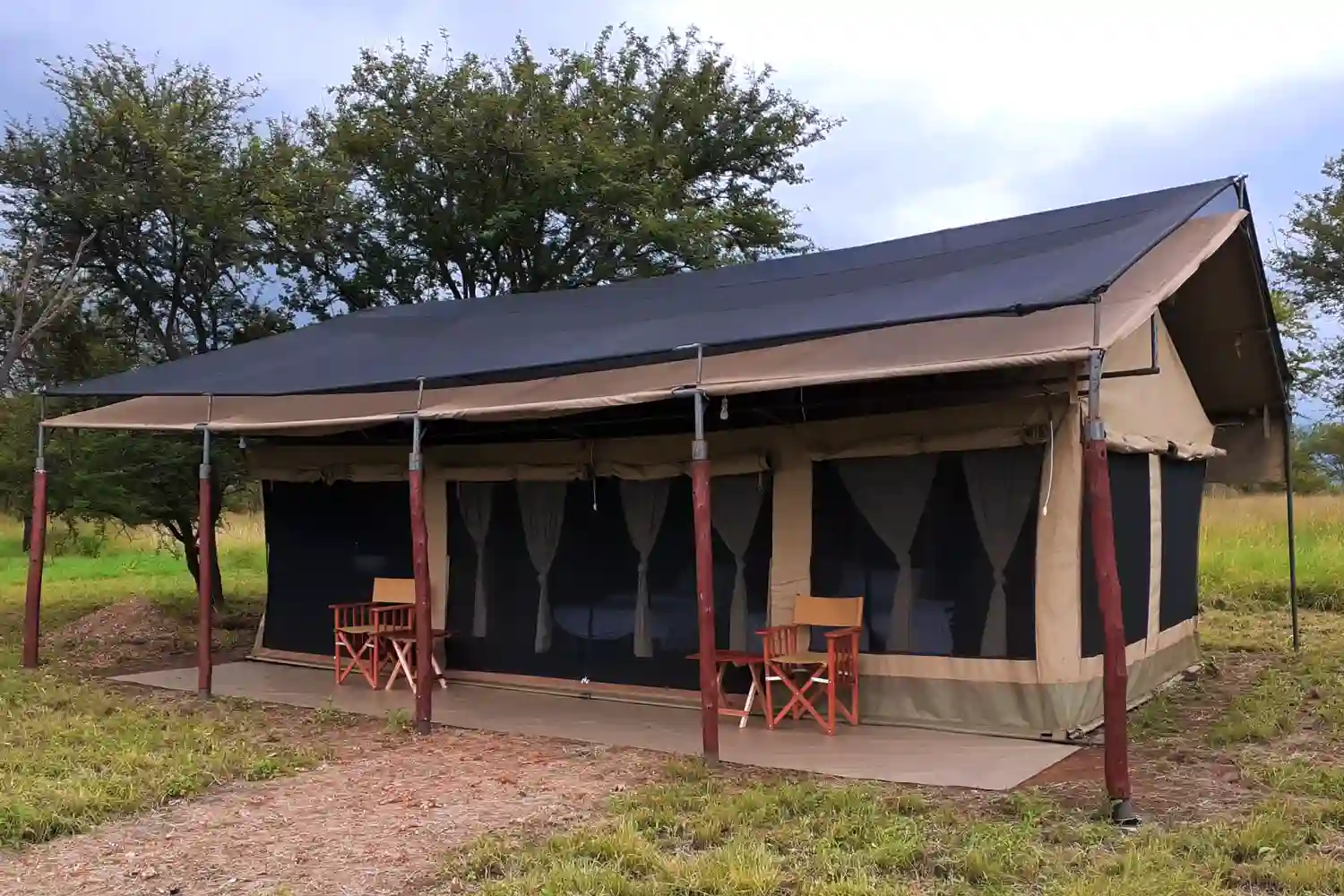
- It is always recommended to book the migration Safari as early as possible because the camps and lodges are limited in number. They fill up very quickly, especially from June to October.
- The Majority of the Migration happens in Serengeti National Park, Tanzania, and only a small part of the cycle occurs in Masai Mara National Reserve, Kenya.
- The river crossings are highly unpredictable, but they generally occur from May to September in different parts. The more the number of days you stay, the higher the chance to witness it.
- Since the migration and the river crossing are big events, you can expect more crowds from June to September in Serengeti and Masai Mara.
- Always stay close to the river or choose the mobile migration camps for the best game viewing. Although you cannot see the migration from your campsite, you can always drive around and search for them.
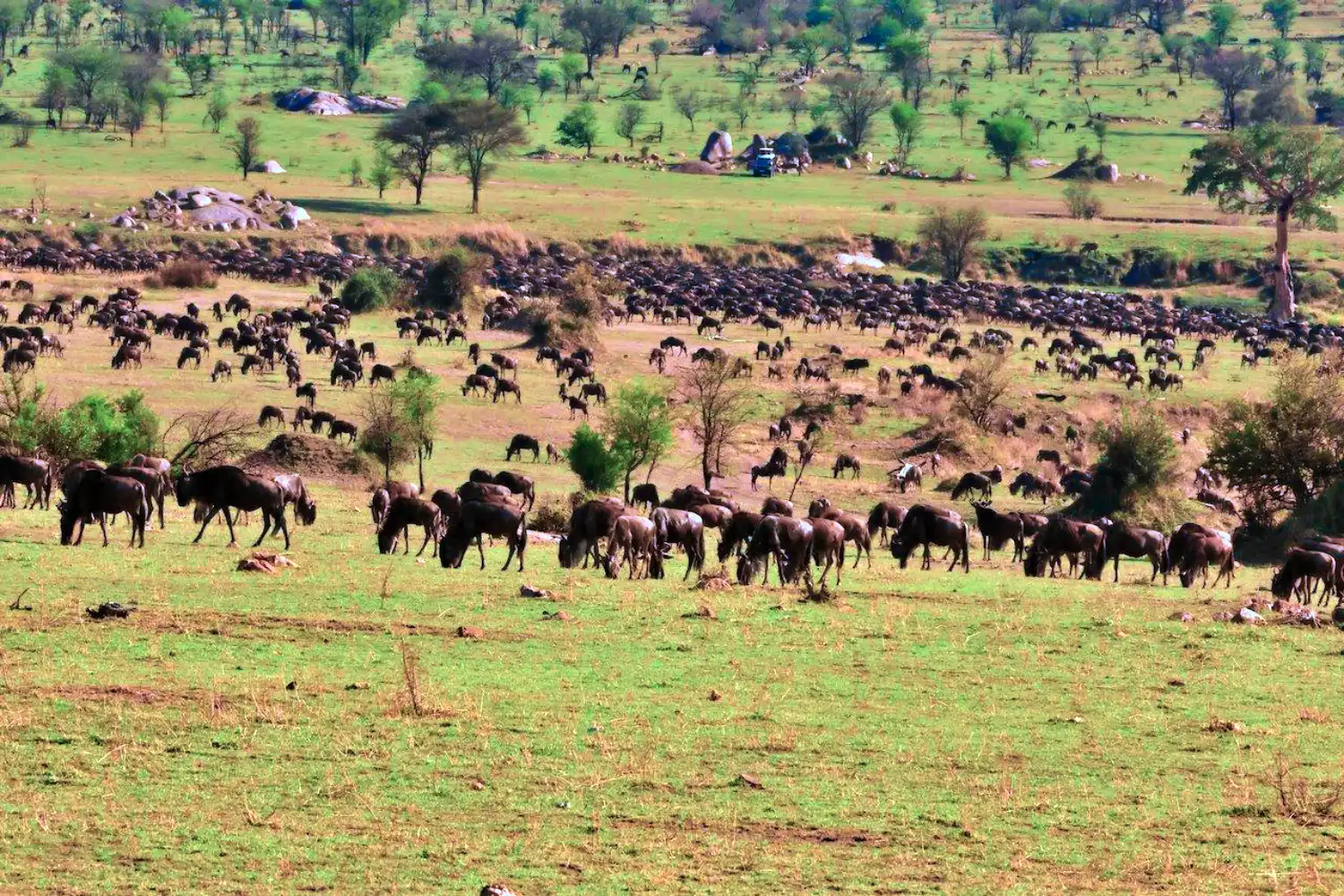
Related Tanzania Experiences
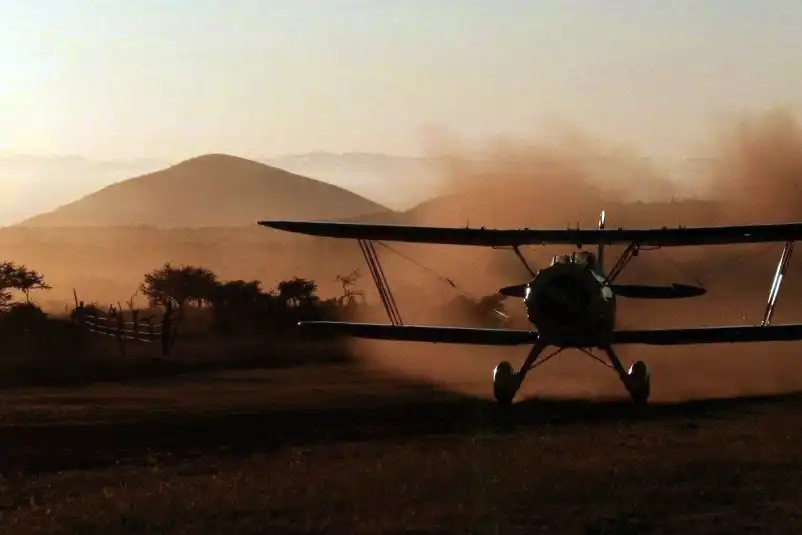
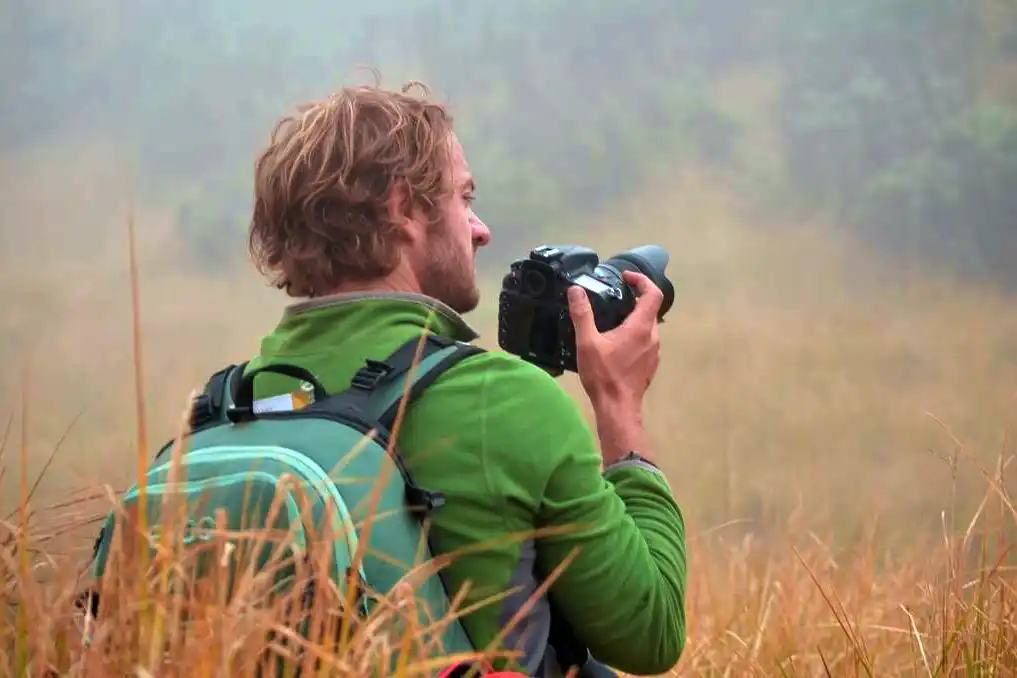
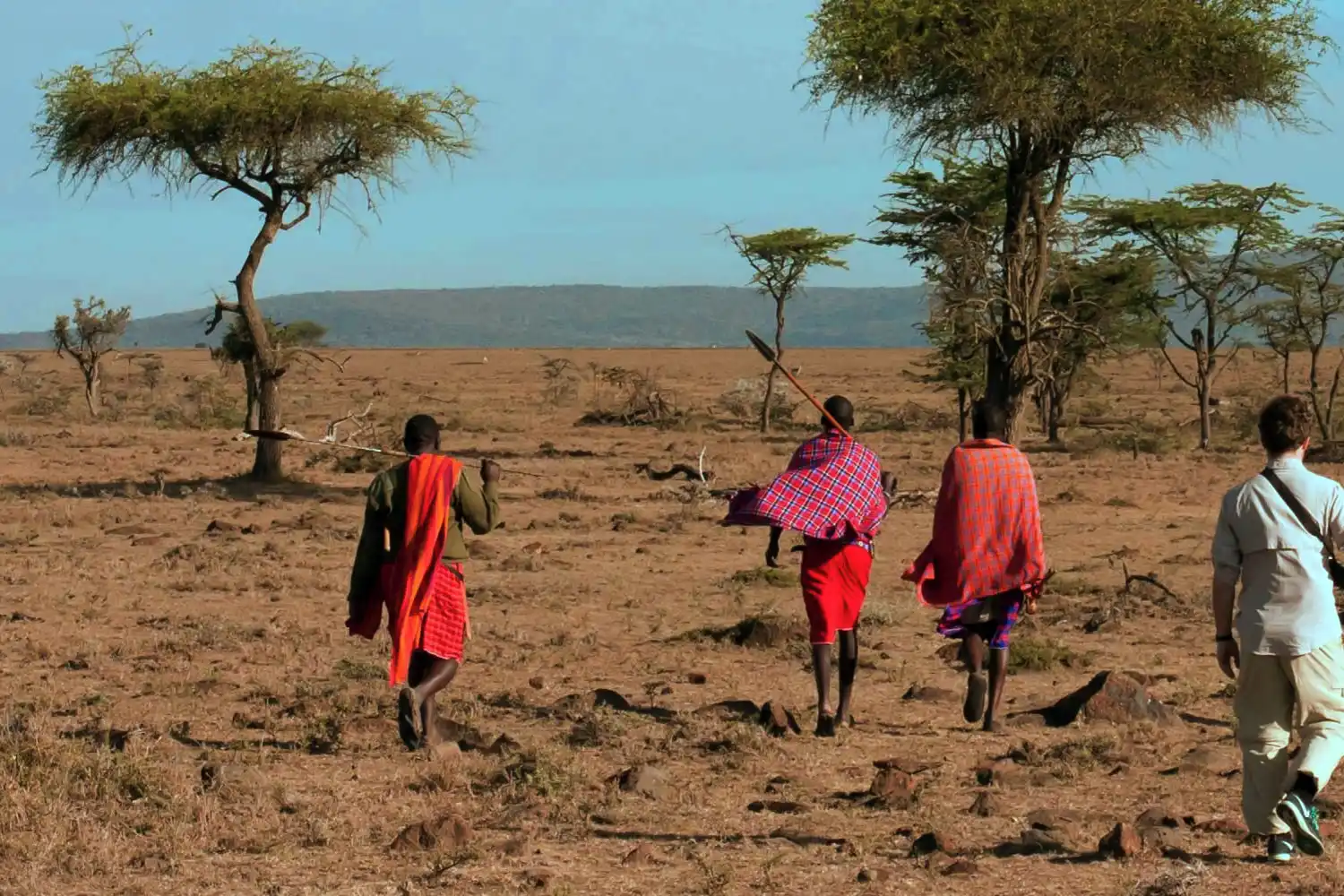
Reviews from our Happy Clients
Excellent Customer Service and Support
We had a 7 days luxury safari with Meijo Safaris, we celebrated our honeymoon with a well-arranged itinerary. We had a chance to visit Tarangire, Serengeti, Ngororongoro and Lake Natron.
We received an excellent service throughout our safari, the lodges was very nice and friendly as we also had many animals visiting near the lodges.
Read More
Meijo magic in Tanzania!
I can highly recommend Meijo Safaris. We booked ‘The Best of Safari, Lake Eyasi & Lake Natron’ with mid-range accommodation.
Meijo is a small company that gives you the personal touch. I was impressed that Daudi, the owner, met us at the airport and saw us off the following day. He also met us on our return.
Meijo Safari-The best Safari company and guide!
Meijo Safaris guided by Tariq, experienced guide and naturalist, was a life changing experience for my wife and me.
What made this experience stand out was the reliability, knowledge and care offered by Meijo travels and their guide Tariq.
Read More
Where to Sleep ?
Budget Camping, Tented Camps and Lodges
Africa has a wide selection of holiday activities to offer, as well as accommodations to match. We specialize in tailor-made safaris, which means we design an itinerary according to your likes, preferences, and interests. We know Africa’s top hotels, safari lodges, and villas because we’ve stayed in them. When you book your African safari with us, you can expect unbiased, experienced guidance.

Let's plan the trip of a lifetime
Request a travel quote now and a travel expert will be in touch with you within 24 hours.
How Does it Work
- Describe the dream trip you would like to take
- You will receive personalized advice from a travel consultant
- Confirm & start packing

